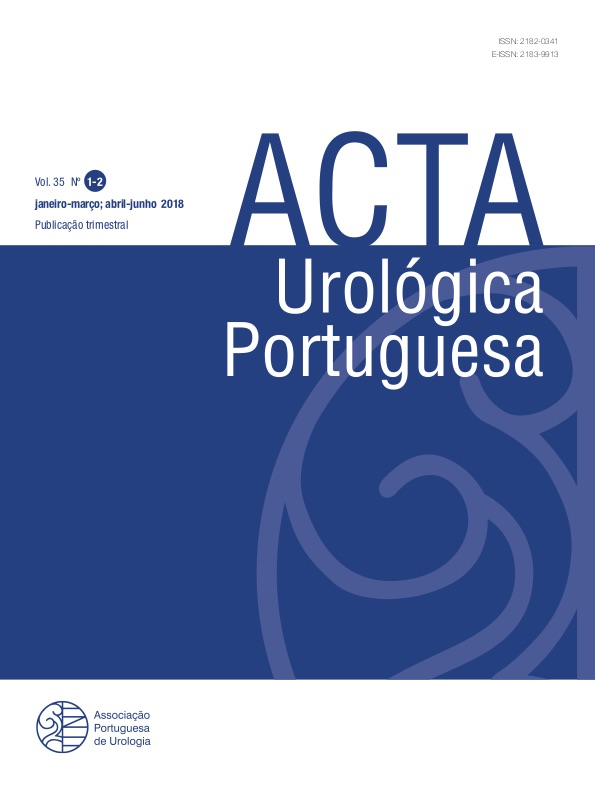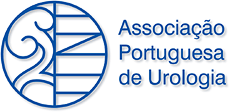Risk Factors and Chemical Composition of Urinary Stones in the Azorean Population (São Miguel Island - Portugal): A Preliminary Study
DOI:
https://doi.org/10.24915/aup.35.1-2.67Keywords:
Risk Factors, Urinary Calculi/chemistryAbstract
Introduction: Urinary stone disease is one of the most common disorders of the urinary tract. However, the main risk factors and chemical composition of urinary stones in the population of the Azores are unknown. The objective of this study was to define the most important factors associated with the formation of urinary calculi, investigating eating habits, family history and chemical composition of the calculi in the population of the Azores.
Methods: The data were collected from 46 patients of the Hospital do Divino Espirito Santo and 48 healthy volunteers. A questionnaire was recorded on the medical and family history of the participants and on their life habits. The chemical composition of the calculi was evaluated by ICP-MS.
Results: It was observed that the study group has a higher prevalence of diabetes and cases of urinary calculi in the family compared to the reference group. A positive correlation was found between calcium in the stones and the contents of sodium, magnesium, zinc, molybdenum and strontium.
Conclusion: This study reveals that family history, diabetes and water consumption play an important role in the development of urinary calculi in the population of the Azores. The chemical content of the stones should also be considered since these data could help the medical community to understand the causes of urinary stone formation and adapt the medication and preventive measures to the patient and to the type of kidney stone produced.
Downloads
References
2. Ramello A, Vitale C, Marangella M. Epidemiology of nephrolithiasis. J Nephrol. 2000; 13: S65–S70.
3. Curhan G, Willett W, Rimm E, Stampfer M. Family history and risk of kidney stones. J Am Soc Nephrol. 1997; 8:1568–73.
4. Maloney ME, Springhart WP, Ekeruo WO, Young MD, Enemchukwu CU, Preminger GM. Ethnic background has minimal impact on the etiology of nephrolithiasis. J Urol. 2005; 173:2001–4.
5. Romero V, Akpinar H, Assimos DG. Kidney stones: a global picture of prevalence, incidence, and associated risk factors. Rev Urol.2010; 12:e86-e96.
6. Rousad A, Pedrajas A. Estudiio epidemiológico de la urolithiasis en Espana. Madrid: Asociación Espanola de Urología, Grupo de Urolithiasis; 1986.
7. Sánchez-Martin FM, Millán RF, Esquena FS, Segarra TJ, Rousaud F, Martínez-Rodríguez F, et al. Incidencia y prevalência de la urolithiasis en Espana: revision de los datos originales disponibles hasta la actualidad. Actas
Urol Esp. 2007; 31:511-20.
8. Hesse A, Brändle E, Wilbert D, Köhmann KU, Alken P. Study on the prevalence and incidence of urolithiasis in Germany comparing the years 1979 vs. 2000. Eur Urol. 2003; 44:709-13.
9. Reis-Santos JM. The epidemiology of stone disease in Portugal. In: Jungers P, Daudon P, editors. Proceedings of the 7th European Symposium on Urolithiasis - Renal Stone Disease. Paris: Elsevier; 1997.
10. Parreira B, Seidi M, Couto AR, Meneses R, Lima M, Rodrigues R, Ribeiro M, Burges-Armas J. Urolithiasis Bioresource. Open J Bioresources. 2014; 1: e4.
11. Pearle MS, Calhoun EA, Curhan GC. Urologic Diseases of America Project. Urologic diseases in America project: urolithiasis. J Urol. 2005; 173:848–57.
12. Uribarri J, Oh MS, Carroll HJ. The first kidney stone. Ann Intern Med. 1989; 111:1006–9.
13. Han H, Seagal AM, Seifter JL, Dwyer J Nutritional management of kidney stones (nephrolithiasis). Clin Nutr Res. 2015; 4: 137-52.
14. Turney BW, Appleby PN, Reynard JM, Noble JG, Key TJ, Allen NE. Diet and risk of kidney stones in the Oxford cohort of the European Prospective Investigation into Cancer and Nutrition (EPIC). Eur J Epidemiol. 2014; 29:
363.
15. Taylor EN, Fung TT, Curhan GC. DASH-style diet associated with reduced risk for kidney stones. J Am Soc Nephrol. 2009; 20:2253.
16. Meschi T, Nouvenne A, Ticinesi A, Prati B, Guerra A, Allegri F, et al. Dietary habits in women with recurrent idiopathic calcium nephrolithiasis. J Transl Med. 2012; 10:63.
17. Robertson WG. Epidemiology of urinary stone disease. Urol Res. 1990; 18: S3-S8.
18. Nerli R, Jali M, Guntaka AK, Patne P, Patil S, Hiremath MB. Type 2 diabetes mellitus and renal stones. Adv Biomed Res. 2015 4: 180.
19. Polat EC, Ozcan L, Cakir SS, Dursun M, Otunctemur A, Ozbek E. Relationship between calcium stone disease and metabolic syndrome. Endourol Stone Dis. 2015 12: 06.
20. Sofia NH, Manickavasakam K, Walter TM. Prevalence and risk factors of kidney stone. Global J Res Analysis. 2016; 5: 183-7.
21. Osther PJ. Epidemiology of kidney stones in the European Union. In: Talati JJ, Tiselius HG, Albala DM, Ye Z, editors. Urolithiasis: basic science and clinical practice. London: Springer; 2012. pp. 3–12.
22. Keshavarzi B, Yavarashayeri N, Irani D, Moore F, Zarasvandi A, Salari M Trace elements in urinary stones: a preliminary investigation in Fars province, Iran. Environ Geochem Health. 2015; 37:377-89.
23. Khattech I, Jemal M. A complete solid-solution exists between Ca and Sr in synthetic apatite. Thermochim Acta. 1997; 298:23.
24. Sakhaee K, Harvey JA, Padalino PK, Whiston P, Pak CY. The potential role of salt abuse on the risk for kidney stone formation. J Urol. 1993; 150: 310–2.
25. Słojewski M, Czemy B, Safranow K, Jakubowska K, Olszewka M, Pawlik A et al. Microelements in stones, urine, and hair of stone formers: a new key to the puzzle of lithogenesis? Biol Trace Elem Res. 2010;137:301-16.
26. Cloutier J, Villa L, Traxer O, Daudon M. Kidney stone analysis: “Give me your stone, I will tell you who you are!” World J Urol. 2015; 33:157-169.
27. Daundon M, Jungers P. Stone Composition and Morphology: A Window on Etiology. In: Talati J, Tiselius H-G, Albala DM, YE Z, editors. Urolithiasis: Basic Science and Clinical Practice. Berlin: Springer; 2012.




